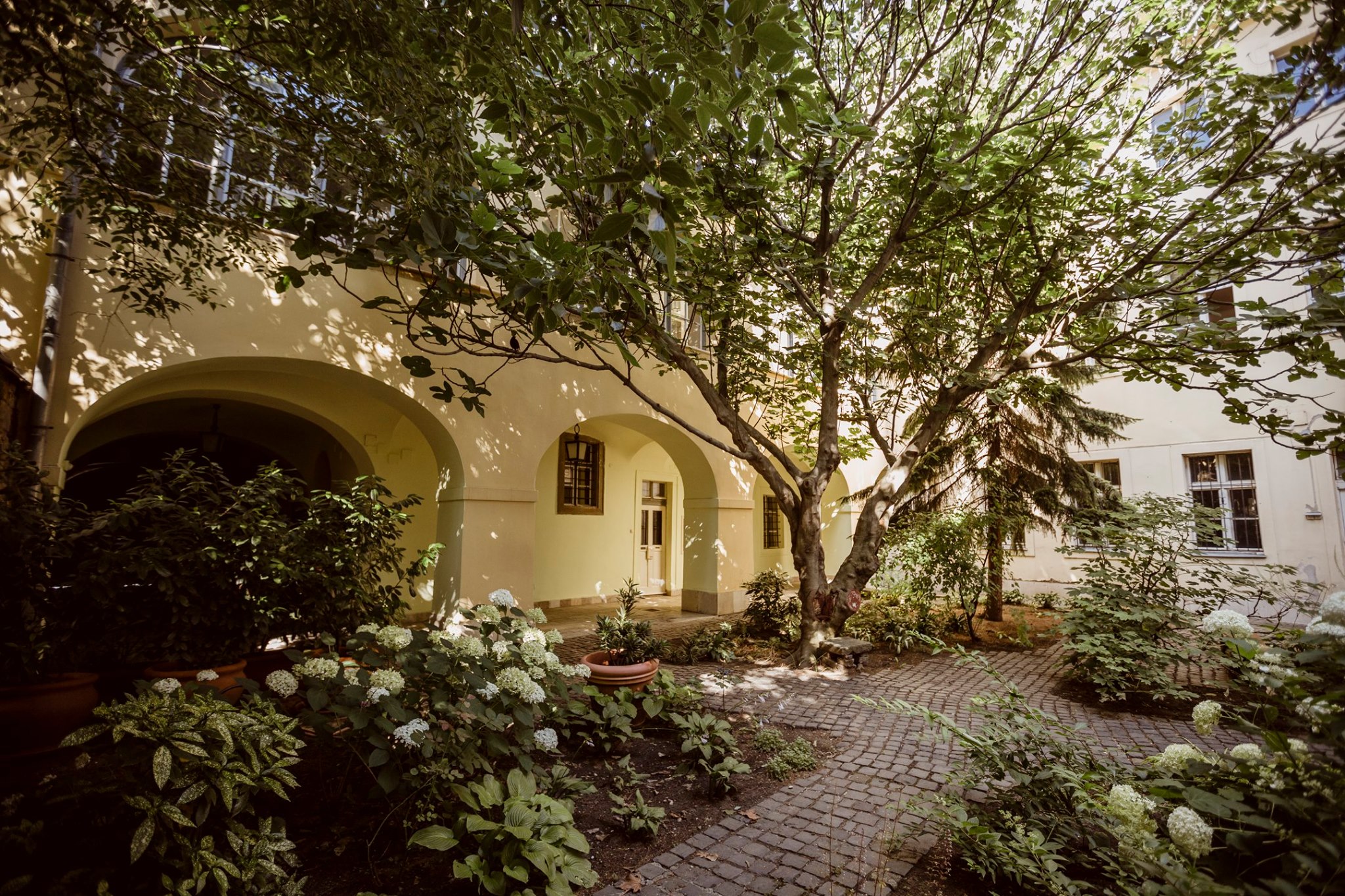The yellow-ochre building on Dísz tér, next to the Korona Café, with its post office at street level, hardly suggests that it hides an exceptional Baroque palace with a courtyard arcade loggia, Baroque doorway, Baroque living space and nearly 250 square meters of painted walls dating from the 18th century. Emerging from 15 coats of paint in 1962, this is the most precious asset of this multi-faceted palace.
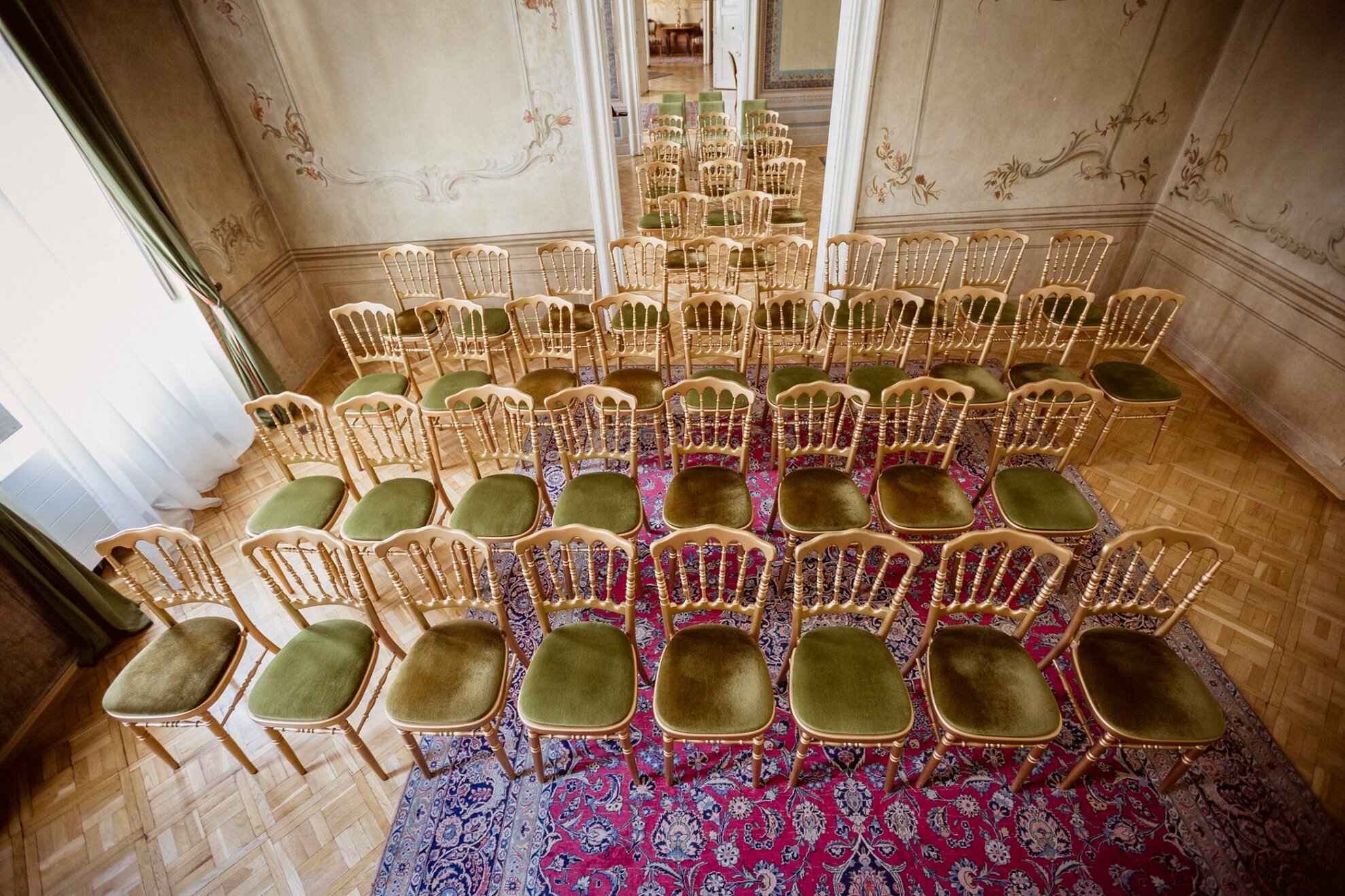
Its first owners were beholden to Habsburg Empress Maria Theresa. Two buildings stood here on medieval foundations, Baron Francis Charles de la Motte and his wife built their modest-looking palace in their place. The baron was entrusted by Maria Theresa with supervising construction. The two-floor vaulted house with five connecting rooms was built in 1760, but he did not move in for some time.
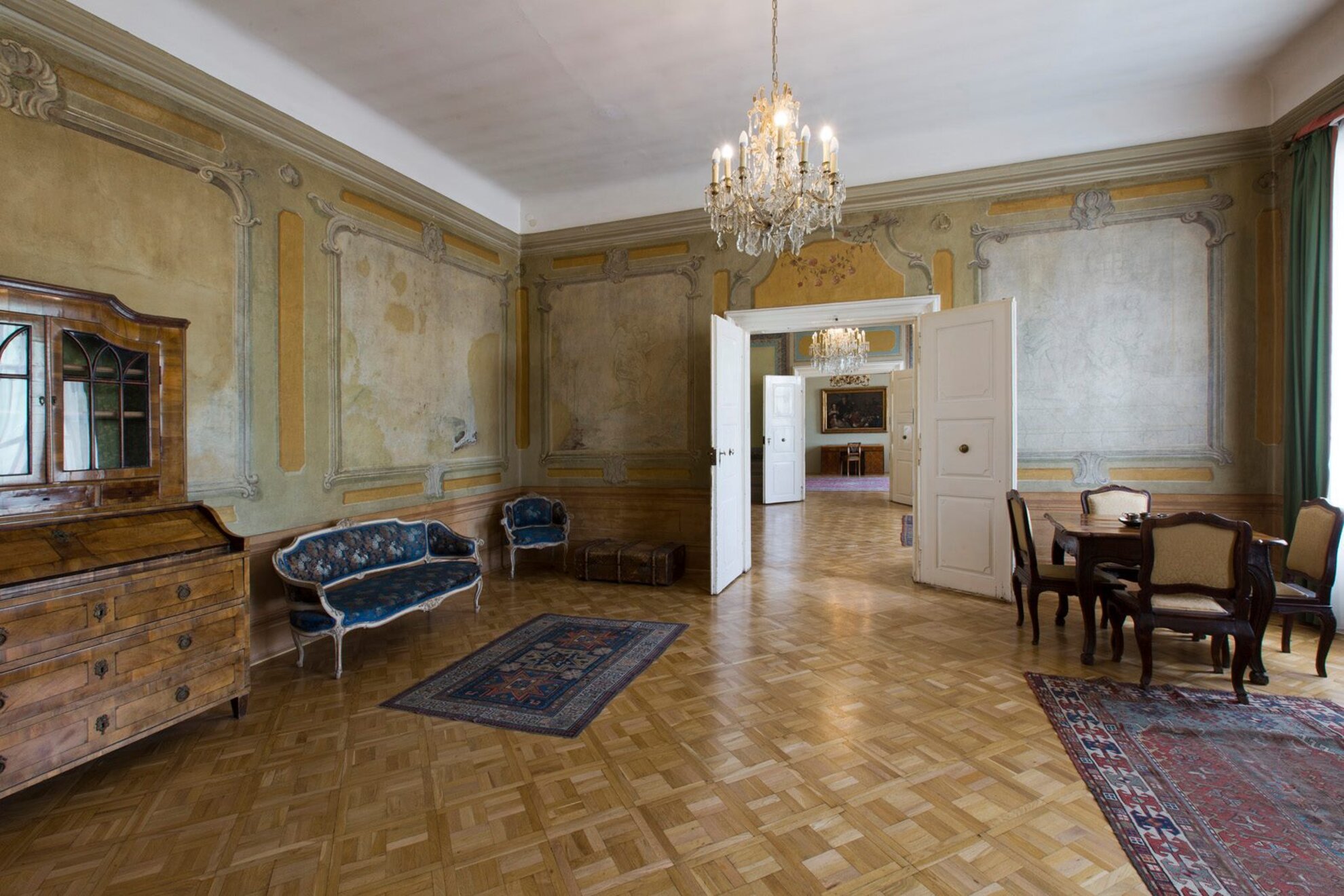
The ground floor was rented as a pharmacy as early as 1763 by József
Beer Kajetán, an imperial and royal military pharmacist of Czech-Moravian
origin. Educated and trained in his field, he was the richest citizen in Buda, owning
residential houses and a potash factory.
In 1773, he bought the whole palace
and subordinated it to his own occupation: in the vaulted cellar he stored
spirits, medicinal waters and perishable preparations, and used the attic space
as a room for drying herbs.
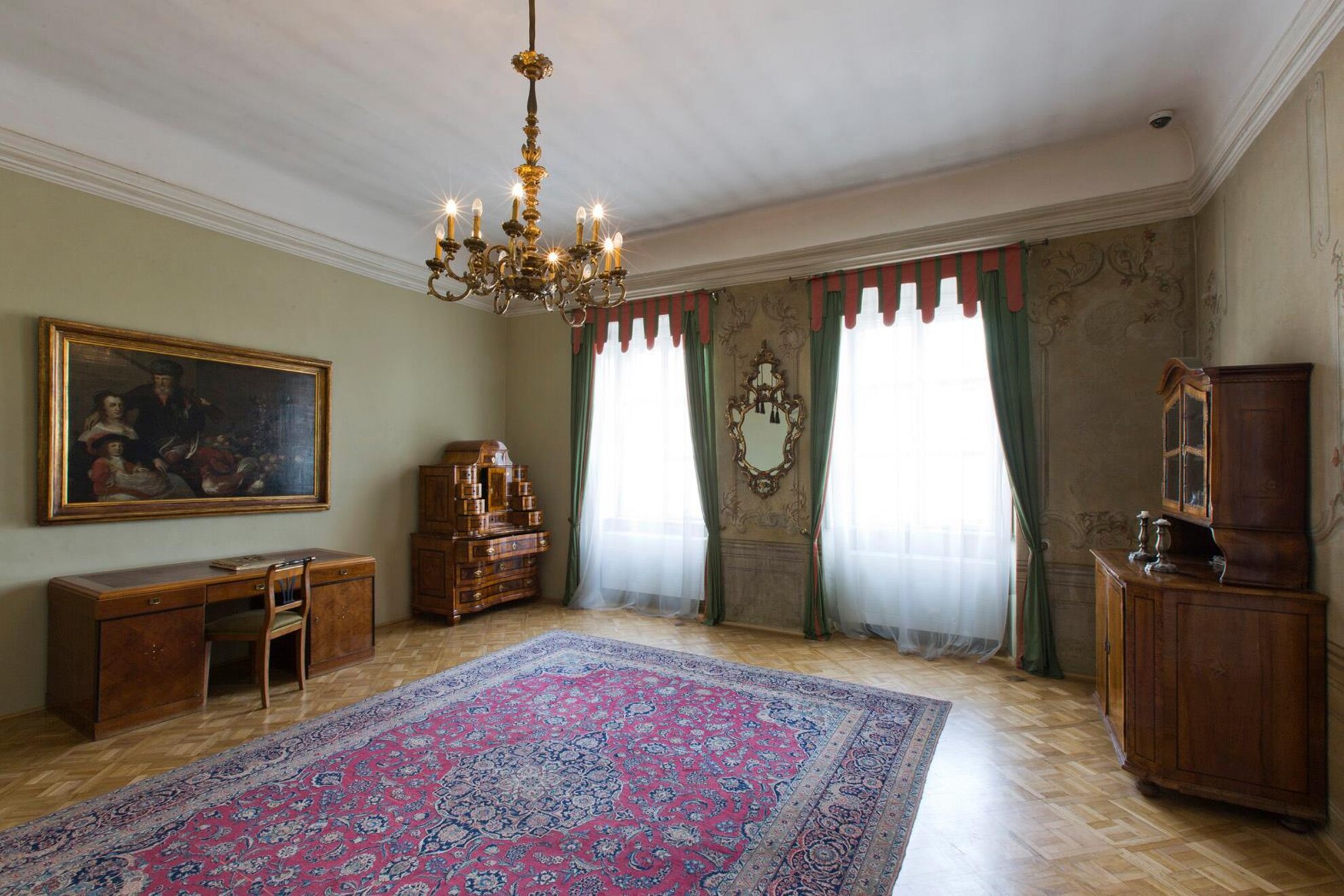
There, the arrangement of the beams in the roof structure, created with expert
carpentry, is mostly in its original condition, suggesting that its function as an
apothecary played a role in the construction of the house.
At that time, there
were no roof structures suitable for fresh herbs. Beer’s downstairs laboratory
looked out onto the inner courtyard – sugar and chocolate were also available from
the street-front pharmacy. Beer even had the money to bring pastilles from
Spain and France.
After he fell ill, his duties were assumed by wife, whose
civil background proved no obstacle to her work. She also led an active social
life by serving aristocratic ladies.
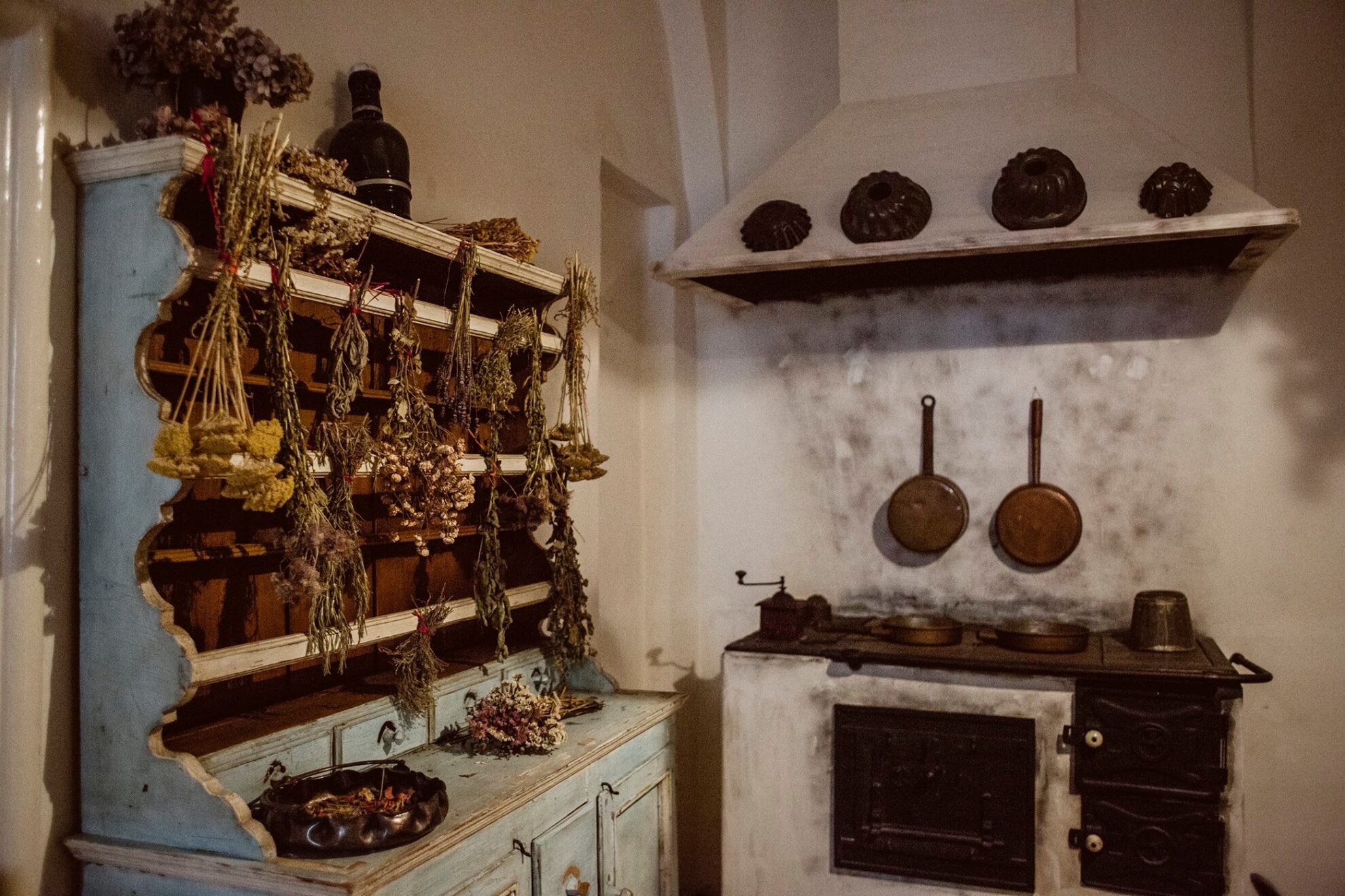
The family lived here until 1807, which is when the aesthetically rich interior and style developed, still admired by visitors today. Most of the
windows and locks are original, while the authentic chandelier, alabaster
pendant lamp and inside toilet, the Baroque inlaid table, late Copf-style stove
and Baroque kitchen also merit investigation.
The most unique attraction, the
murals from the second half of the 18th century set around a single axis, adorn
a row of five rooms.
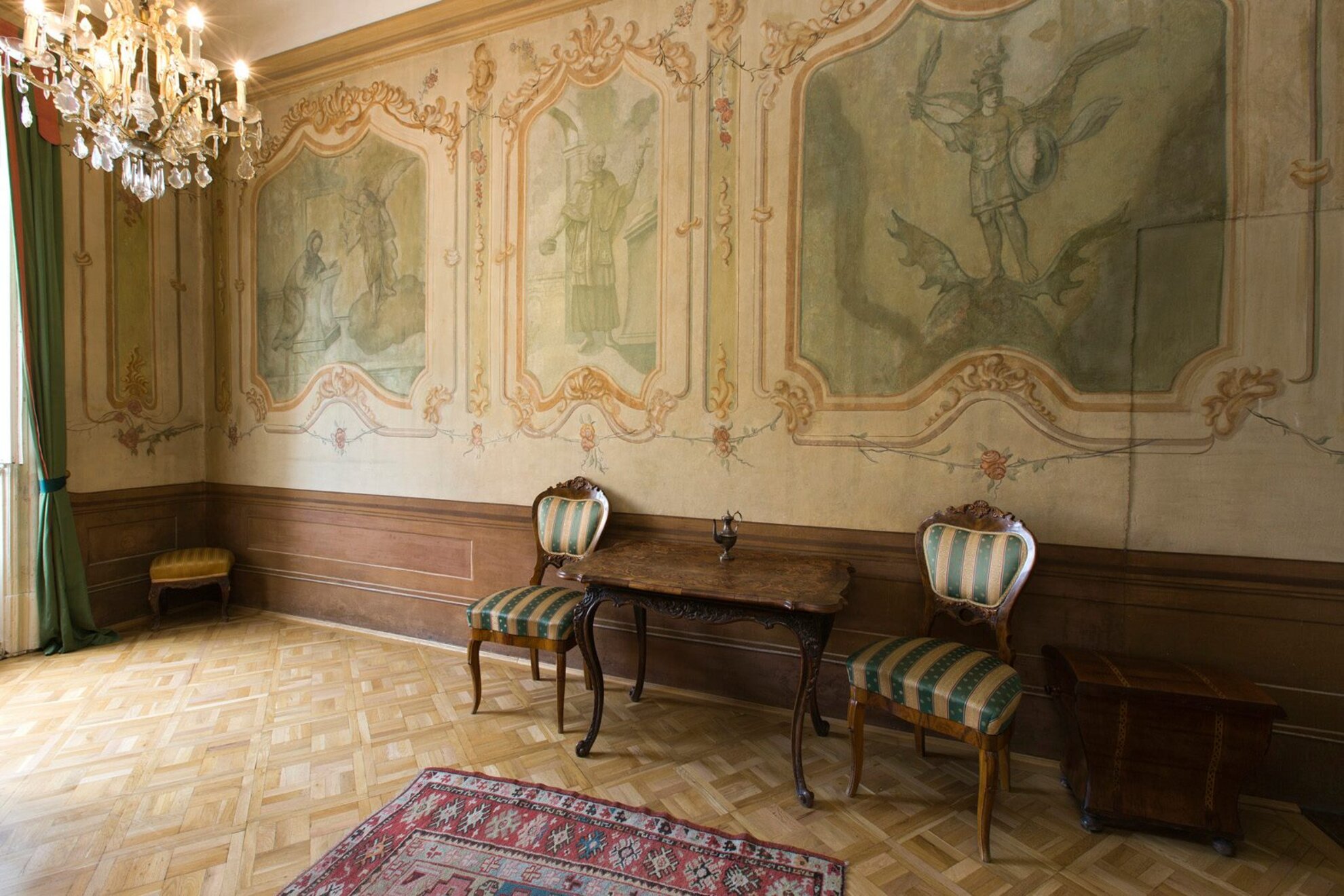
During World War II, the Baroque doorway and the room above were
severely damaged, the gateway walled in during renovation in 1948. The entrance
was opened from the courtyard and, above, flats were created in the Baroque rooms, families
having to walk through each other’s homes.
The façade was restored in 1953, and
the flats modernised in 1962, this further renovation exposing the wall
paintings from the 1700s.
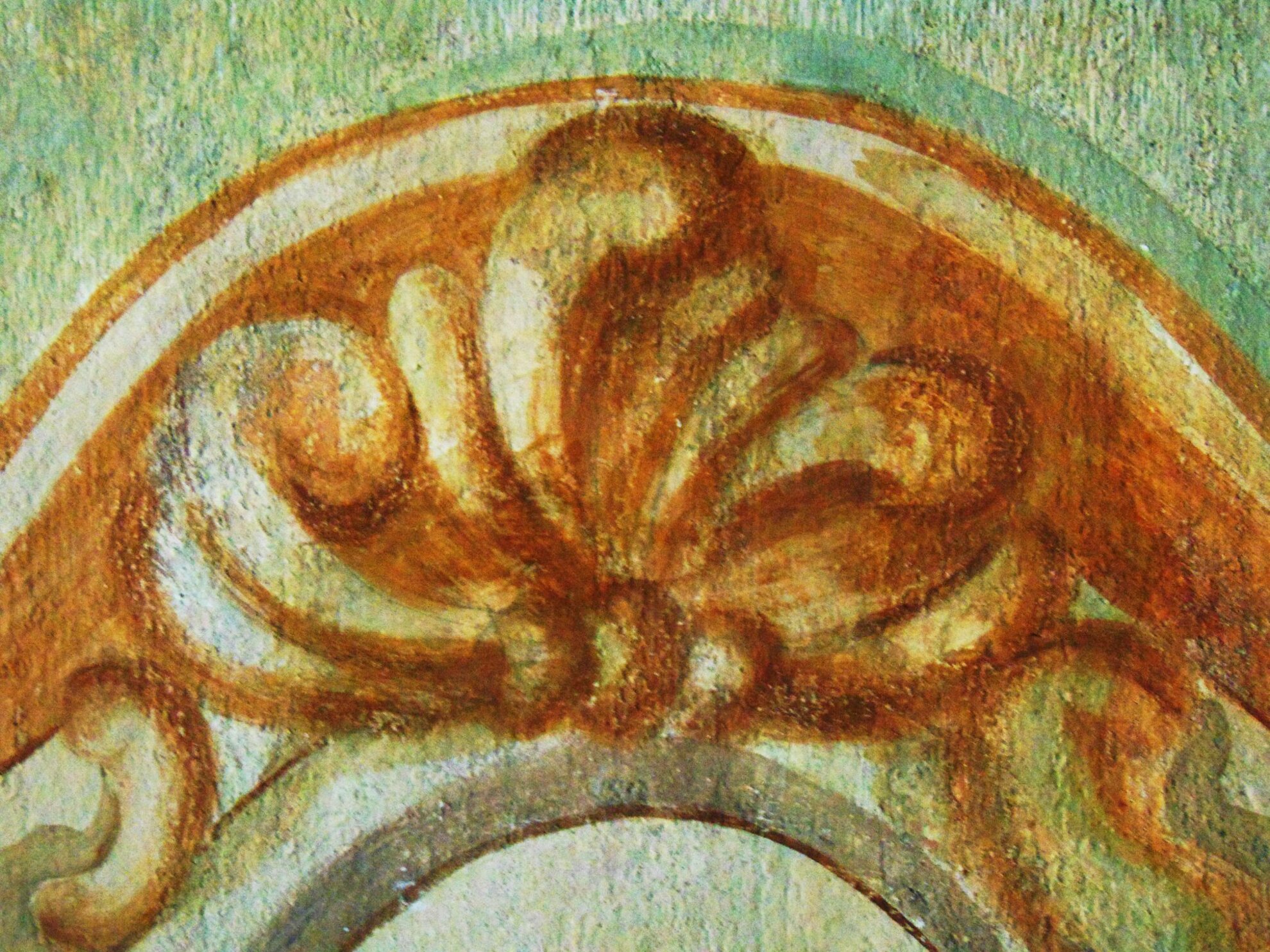
Similar to the almost 250 square metres of uncovered wall space in the five rooms, the paintings decorated in Baroque style are unique amid all the bourgeois and aristocratic architecture of the Castle District, particularly when displayed in an interlinked network of rooms.
Fortunately, they were also aware of their importance of in the 1960s, so until 2013, these polished spaces operated as offices rather than apartments. The building was opened to visitors until 2014, but only for special occasions, Márai-themed literary evenings, music and fine-arts events, performances, the beautiful interiors visible to the public from the cellar to the attic.
The identity of the artist is not clear, but at that time, the average wall painter could produce work of this quality. Moreover, Baron De la Motte had painted the rooms earlier, to a much higher standard than Beer’s.
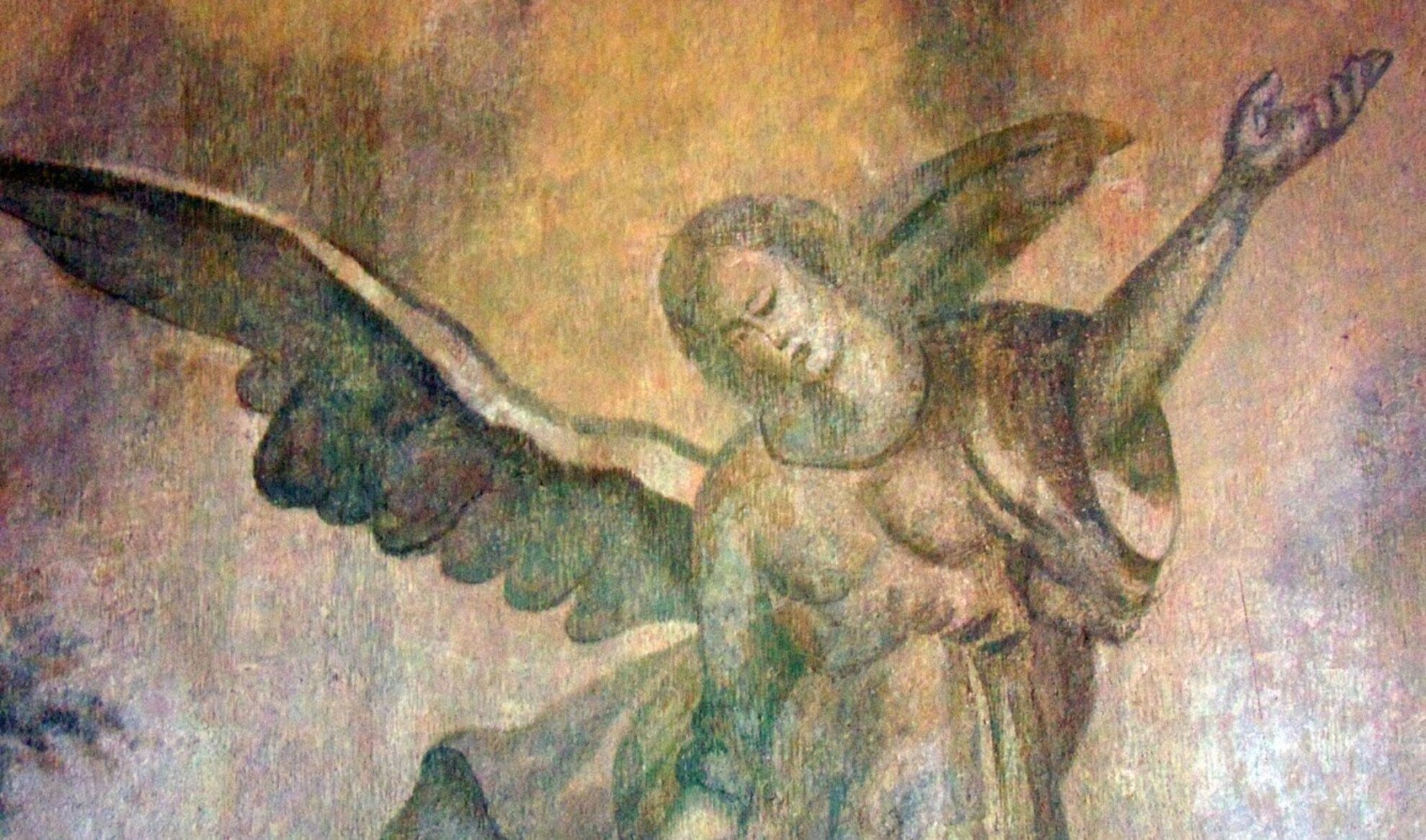
But not all the rooms, so the restorers eventually left the murals commissioned by the Beer family. The Archangel Gabriel appears in the company of the Virgin Mary and the Archangel Michael trampling on Satan’s head. The presence of the healing Archangel Raphael and St John of Nepomuk, the patron saint of confession are evidence that the patron, Joseph Beer. was a doctor.
In the Passion Room, the story of Christ’s suffering has been painted on the wall, the salon is where guests drank Beer’s apothecary chocolate, while rose motifs and Rococo garlands of flowers decorate the winter dining room.
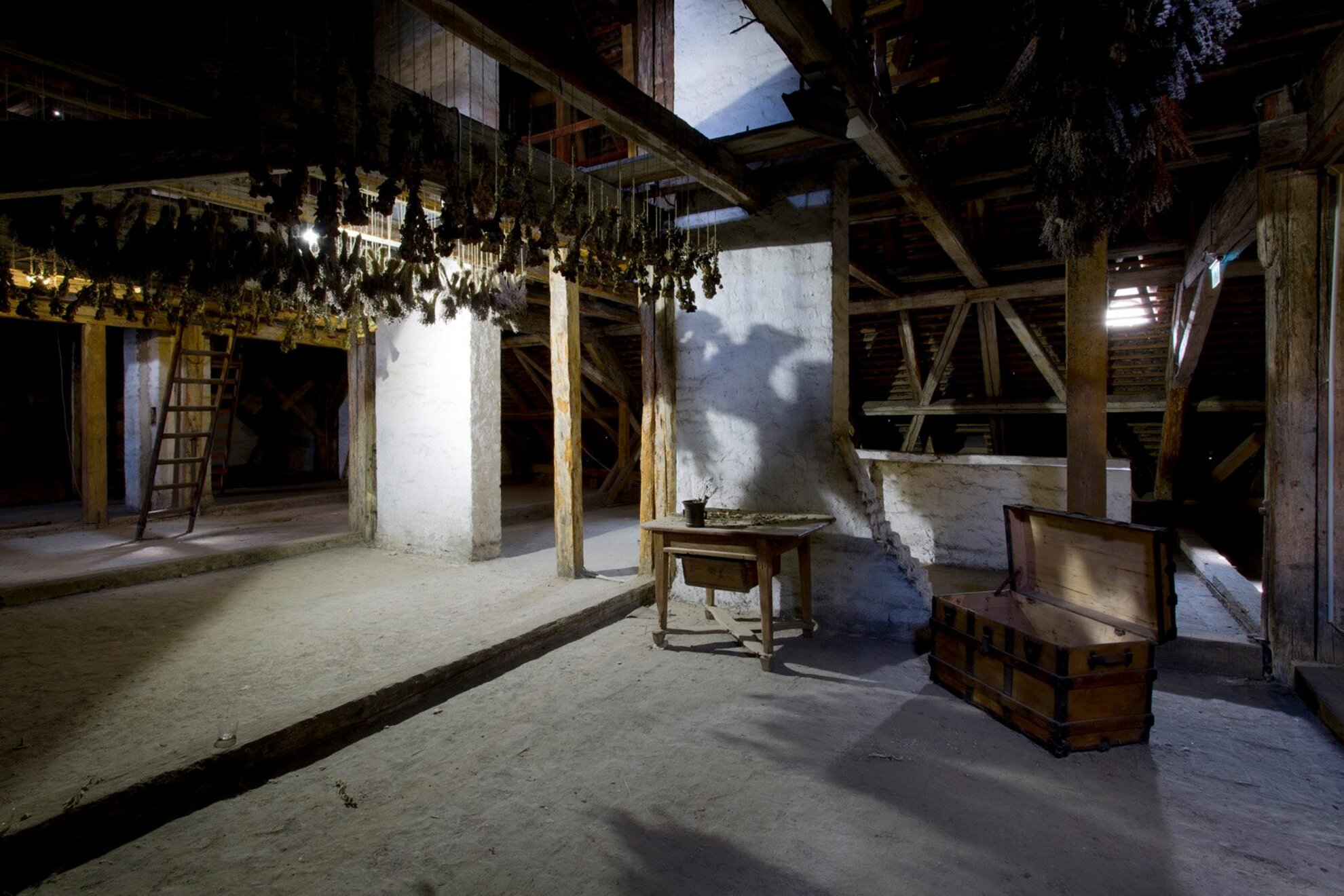
On the last tour before the November shutdown, we even descended into the
cellar, which, like others in the Castle District, forms part of the Buda cave
system. The labyrinths connect the various houses of Buda Castle – from here, a
corridor also led to the nearby Batthyány Palace.
There's also a Baroque well,
a source of water even though it’s high up – the ground waters reach here through
the capillaries of the Buda sedimentary rock.
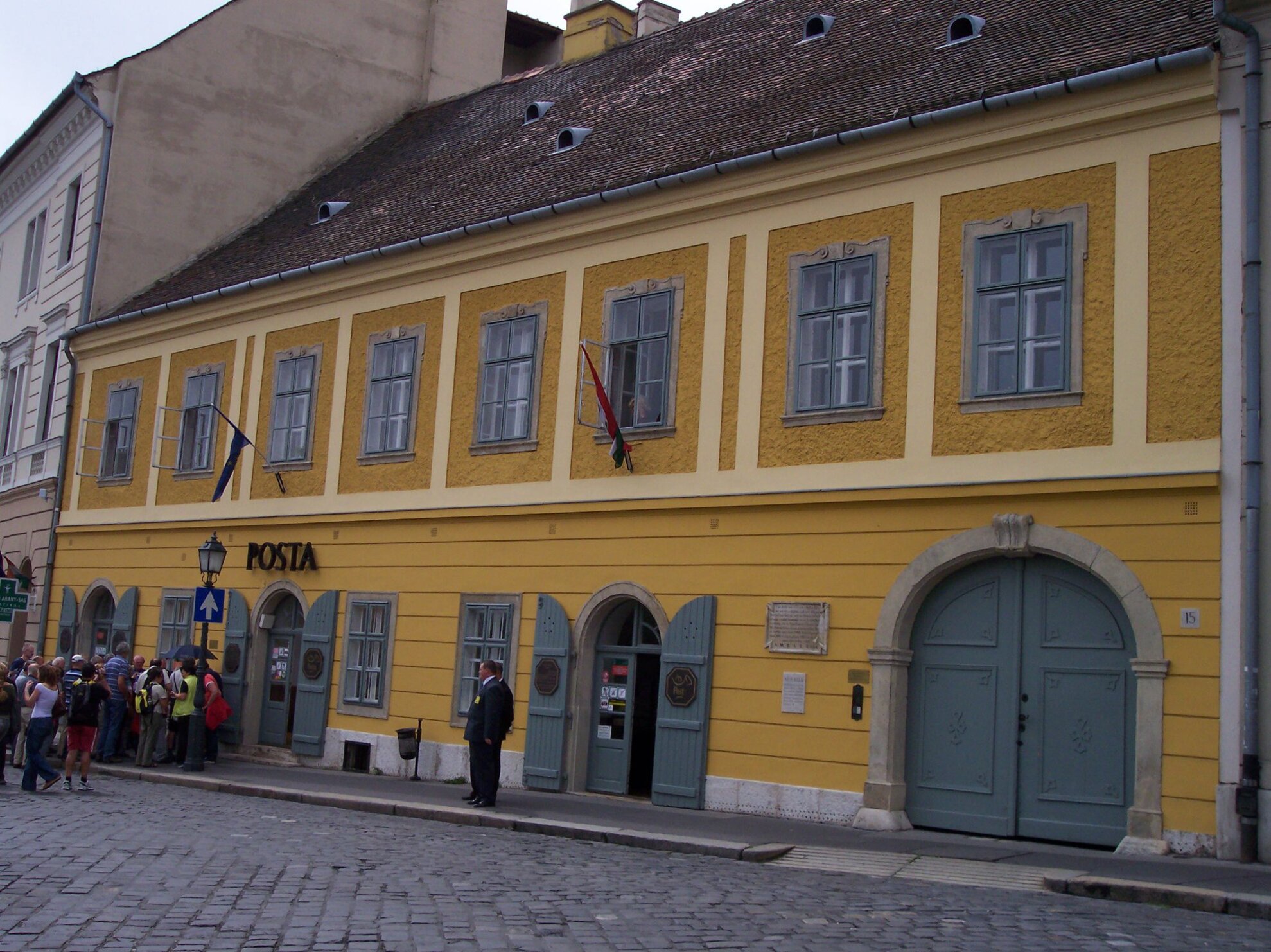
A complete renovation is planned at the De la Motte-Beer Palace, delayed by the pandemic for the time being. Hopefully it won’t be long before others have the opportunity to admire this exceptional Baroque building.
